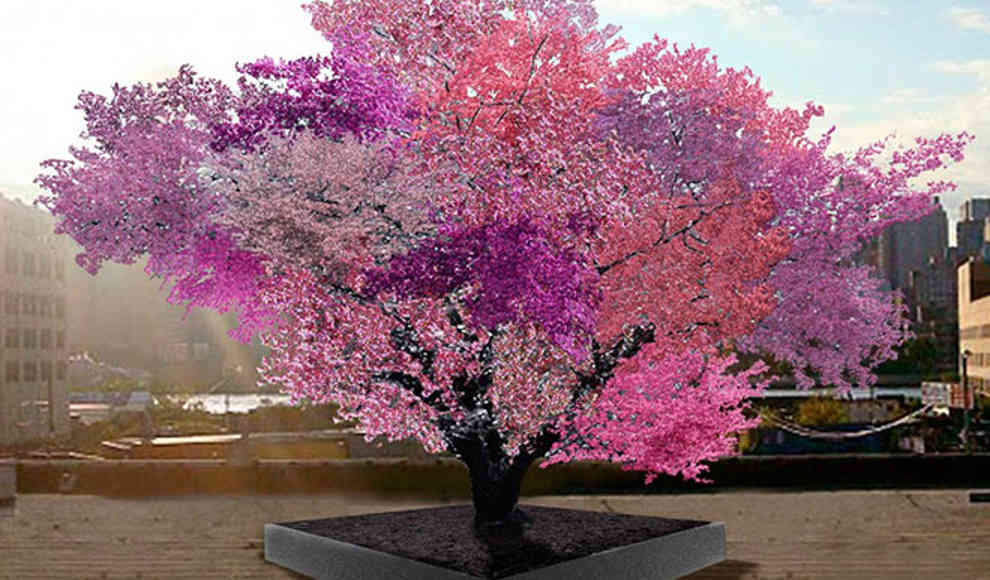In a groundbreaking achievement, a professor of art has created a tree that bears 40 different fruits simultaneously. Sam van Aken, a professor at Syracuse University in New York, has used a process of grafting to create a tree that blooms in multiple colors in the spring and bears fruits such as apricots, cherries, nectarines, almonds, peaches, and plums. The tree, named the “40 Fruit Tree,” is not the result of genetically modified cells, but rather a product of simple grafting techniques that have been used for centuries on various plants. The 40 Fruit Tree is exclusively a stone fruit tree, which is a selection of 250 different varieties that van Aken has experimented with.
Van Aken’s process involves transplanting a branch of one tree onto the rootstock of another tree that is suitable for the climate and soil conditions. Over time, the tree can be further modified by adding more branches from different fruit trees. This allows van Aken to create a tree that bears multiple fruits and blooms at different times. The 40 Fruit Tree is still in its early stages of growth and will take a few more years to reach its full potential.
Van Aken’s inspiration for the project came from the realization that there are hundreds, if not thousands, of different stone fruits that are not commonly found in stores. He saw the 40 Fruit Tree as a way to preserve these old varieties and their heritage. “Almost all fruit trees are grafted,” van Aken explains. “I just took it a step further and used different fruit varieties. This way, I can compose the bloom time of the tree and design it to my liking.” The 40 Fruit Tree is a testament to the power of traditional techniques and the potential for innovation in agriculture.
In conclusion, the 40 Fruit Tree is a remarkable achievement that showcases the possibilities of grafting techniques in creating new and unique plant varieties. Van Aken’s project is not only a work of art but also a means of preserving the heritage of old fruit varieties. The 40 Fruit Tree is a testament to the power of traditional techniques and the potential for innovation in agriculture.










